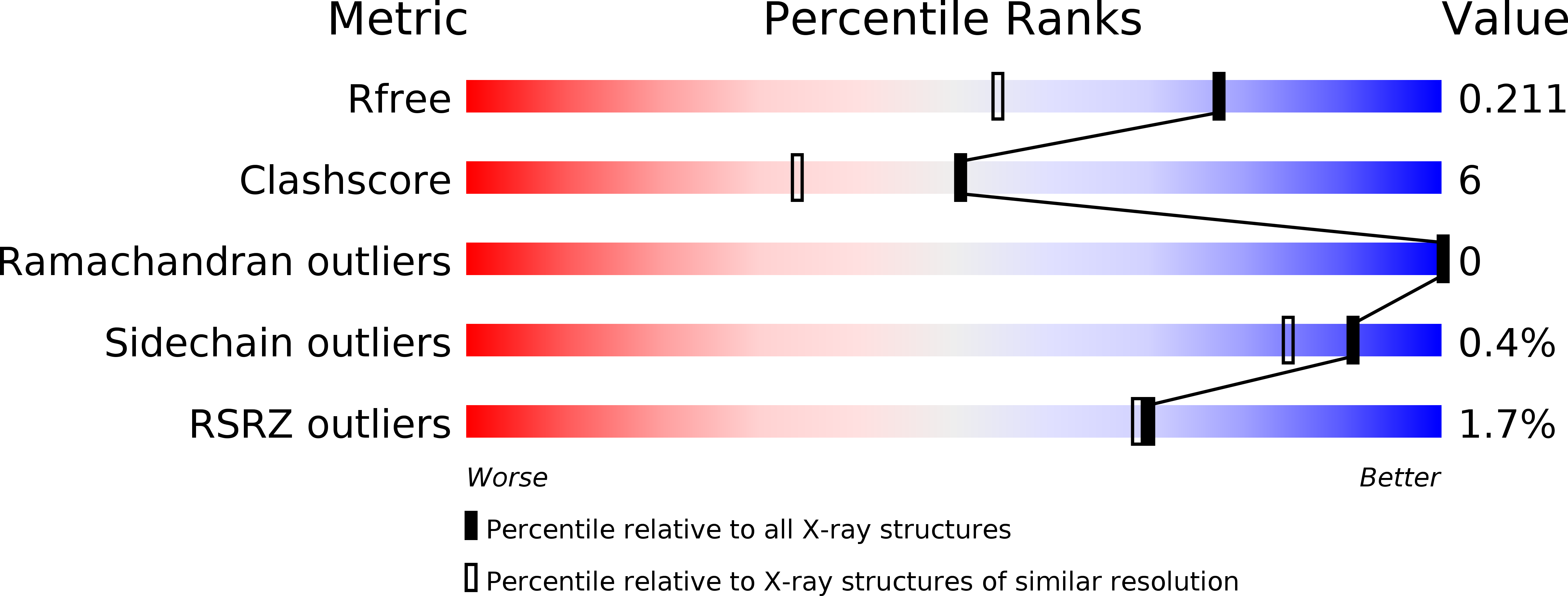
Deposition Date
2016-12-20
Release Date
2017-03-29
Last Version Date
2023-10-04
Entry Detail
PDB ID:
5UAS
Keywords:
Title:
Structure of a new family of Polysaccharide lyase PL25-Ulvanlyase bound to -[GlcA(1-4)Rha3S]-
Biological Source:
Source Organism:
Pseudoalteromonas sp. PLSV (Taxon ID: 1547444)
Host Organism:
Method Details:
Experimental Method:
Resolution:
1.60 Å
R-Value Free:
0.21
R-Value Work:
0.18
R-Value Observed:
0.18
Space Group:
C 1 2 1


